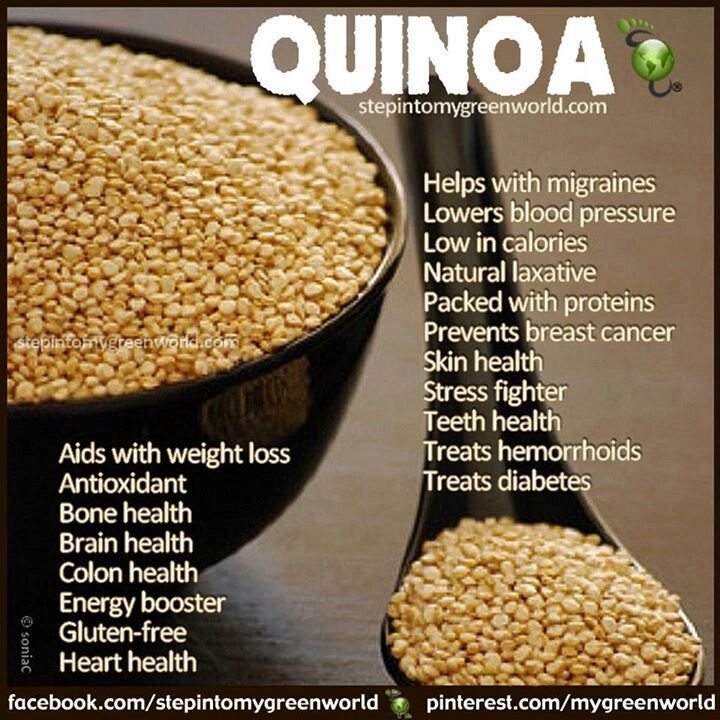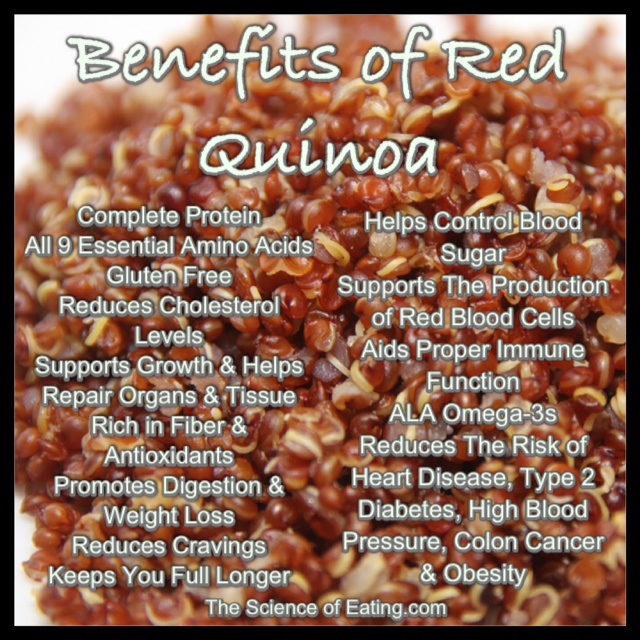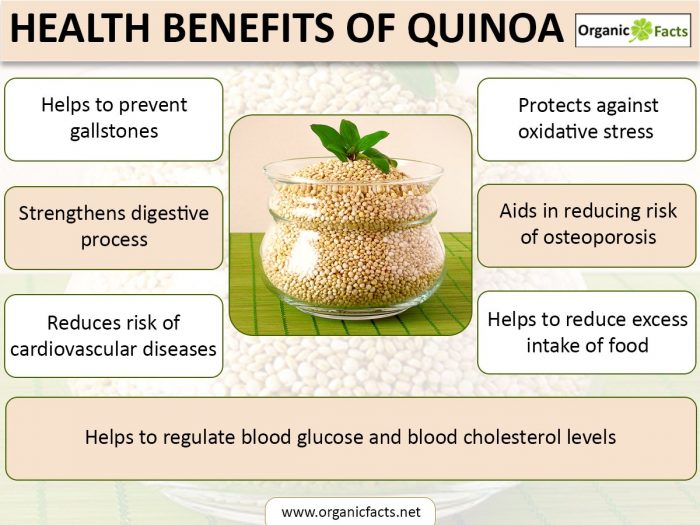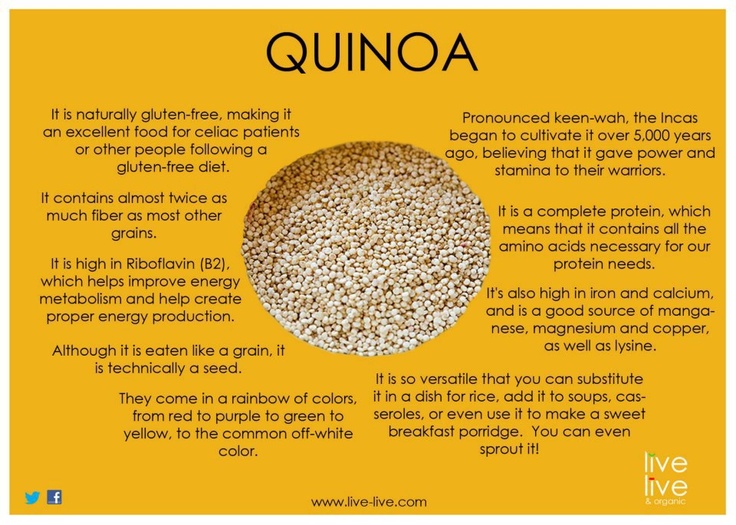Nutritional information
Nutritional Information of the Quinoa
The protein richness of the Real quinoa is thanks to its germ content, 30% of the total weight of the grain, while in most cereals this germ does not exceed 1% of its weight.
The real quinoa has in turn the great advantage of not containing gluten, which is a protein in cereals that can not assimilate babies before 5 to 7 months, being highly recommended for people affected by celiac insufficiency, leaky gut syndrome and other intestinal conditions and / or allergies.


It has anti-inflammatory and healing properties, nowadays it is widely used in dermatological and cosmetic products.
Quinoa is a cereal rich in amino acids and provides appreciable amounts of vitamins C, E, B1, B2, B3 fiber and folic acid.
Quinoa compared to other commonly used cereals such as (wheat, rice, barley, oats etc.) is richer in minerals such as calcium, magnesium, phosphorus, potassium and iron.
Before cooking, quinoa must be washed thoroughly in order to remove the resin as a bitter layer called saponin, even if the box or label says "wash," it is better to wash again, to remove any residue than in the seeds they can be.
THE WONDERFUL QUINOA
Quinoa is a complete protein source, contains all the essential amino acids and more (12-18% protein), is also particularly rich in iron - 1/2 cup contains almost 8 mg, which is much more than any other cereal grain .
This is particularly high in lysine, which is essential for tissue growth and repair, it is also rich in amino acid cystine and methionine, which are usually low in other grains. It is an alkaline food, and rich in calcium and a good source of vitamin E and several vitamins of group B.
Quinoa also contains albumin, a protein found in egg white, serum, blood and many animal plants and tissues. Quinoa is free of gluten, with a low sodium content, and very high in manganese, as well as a good source of copper, which are vital for superoxide dismutase, an antioxidant that helps protect the mitochondria from oxidative damage created through of energy production.
It is also a good source of magnesium, a mineral that acts as a cofactor for more than 300 enzymes, including enzymes that intervene in the body's use of glucose and insulin secretion, contributes to cardiovascular health, and aids in pain of head like the migraine.
A study published in the American Journal of Gastroenterology showed that foods high in insoluble fiber such as quinoa can help women avoid gallstones. In addition, it is a perfect whole grain that helps reduce the risk of type 2 diabetes.
APPLICATION
Quinoa is a grain that has several uses and applications, the main one is of daily and nutritious food order.
Quinoa grain seed is incredibly versatile, raw can be turned into flour, and cooked can be used in soup or main course.
It is perfect to add to a vegetable soup (check out our vegetable soup with quinoa in the recipe book), or when it is cooled in a salad (protein) used as an accompanying portion, instead of rice.
Once you have quinoa remnants, you can make pancakes from it - it's delicious - or you can use it as a gluten-free cereal instead of oatmeal.
You can also make sushi quinoa, which we love so much. To cook, use 1 1/2 to 2 cups of water for 1 cup of washed and rinsed quinoa, and cook it in 15 minutes.
The cooked quinoa can be recycled into a vegetarian souffle, croquettes, even become an imitation to the burger in this case of quinoa
With the quinoa have been prepared facial creams having excellent results in Spas, quinoa has also been used in the production of toothpastes.




